
Dusk fell, chasing the deep red of a sea-bathed sun as it sunk behind the western horizon. Waves crashed several thousand feet below, the sound reaching me like distant thunder. I broke twigs from a heavy tree trunk high above my head, clearing space under the boughs to stretch my tarp. Another tree stood a dozen feet away and soon my camp was pitched between them, a superlight Crosho UL2 Big Agnes tarp stretched diamond-like, a sleeping bag-stuffed hammock swinging gently beneath. Just before dark, I’d seen wild goats capering among the cliffs, and tomorrow I hoped to harvest one. Tonight I cooked my small meal over an open fire, listened to the waves break on the shore far below, and watched the sunset’s glow fade from the horizon. I was alone, bivy-camped deep in the backcountry. Climbing into my hammock, I fell asleep to the pattering of rain on my tarp. Life was good.
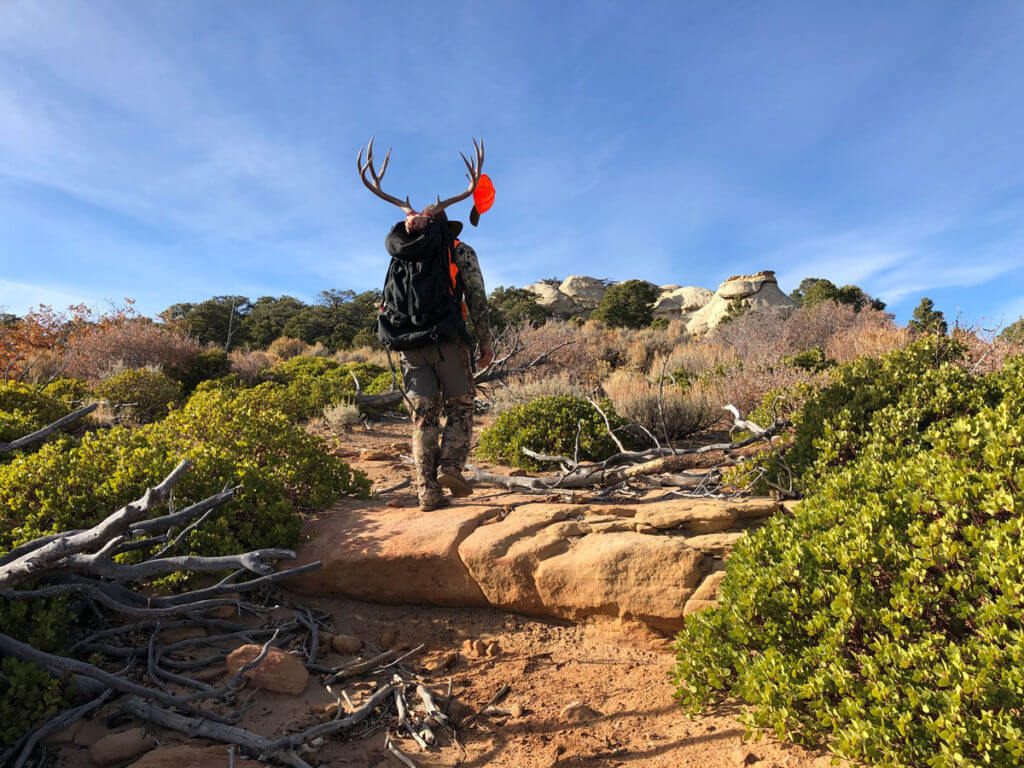
To bivy hunt effectively, you must have the right gear. It’s got to be good stuff, and most importantly of all, it must be super lightweight because more often than not you’ll be carrying it all on your back. I like to divide the gear into three categories: camping and sleeping gear, food and water gear, and a backcountry toolset, which will include your hunting gear.
This will be a three-part series, covering those three categories in detail. I want to reiterate again: get the best gear you can afford. Good quality gear lasts longer, works better, and may keep you alive when cheap gear would fail.
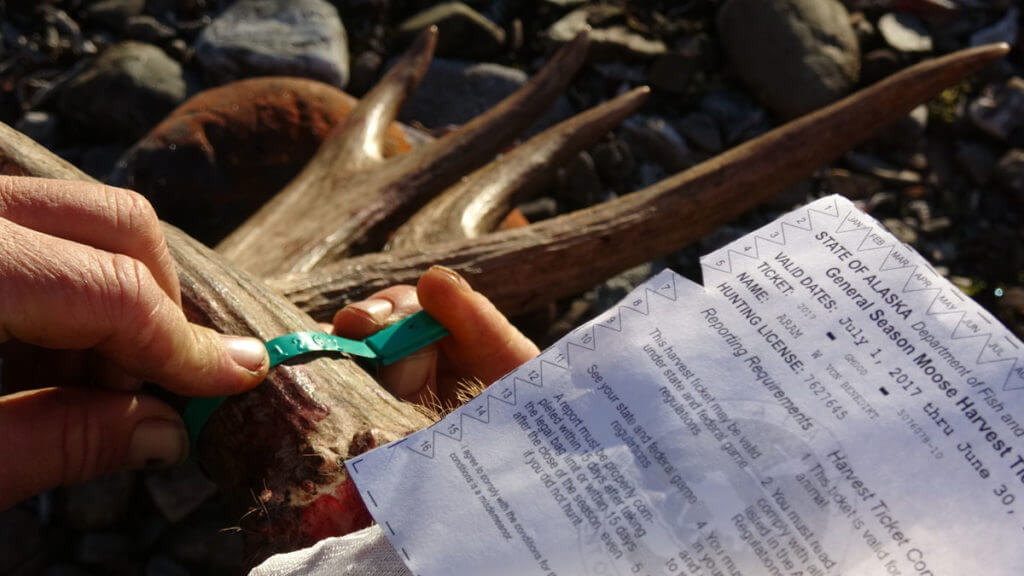
Sleeping Bag: A good bag is the basic and most important ingredient to your sleep gear. I personally prefer a down bag for its superlight, compressible nature unless I’ll be camping in really damp conditions as you’d find in Alaska. When down gets wet, or even damp, it ceases to insulate effectively. (As a side note, some companies are now offering down bags containing “waterproofed” down, rendering it significantly more capable in damp conditions.) In Alaska, Hawaii or other damp climates, I like to use a good synthetic bag that insulates even when wet.
Sleeping bag temperature ratings are somewhat arbitrary, and even the best bags don’t keep a body warm right down to the temp rating. Alive, yes, but not warm. Get a bag that’s rated for at least 20 degrees colder than the temps you expect to encounter. Shivering in your bag all night isn’t a good way to maximize your hunting energy and effectiveness.
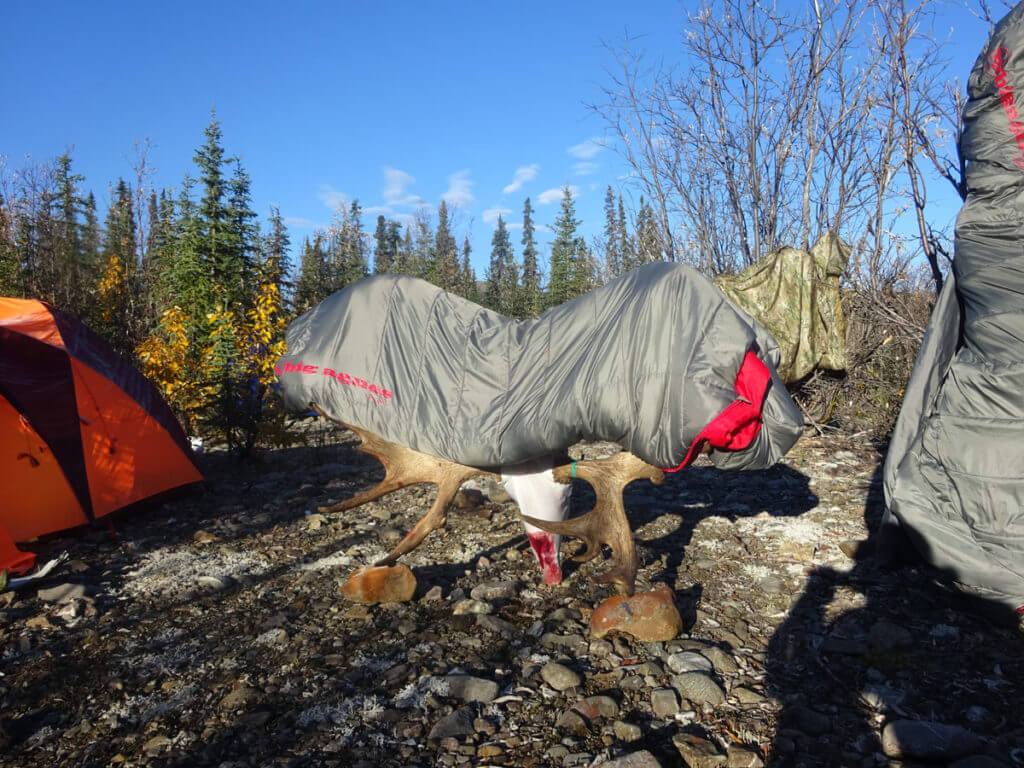
If you’ll be hunting mule deer or elk during an early or general season, a quality bag that’s rated to 0-degrees Fahrenheit and weighs under four pounds will be about perfect. In really cold conditions, like a late-season, high-elevation hunt in Colorado, I recommend a -20 degree bag. When hunting Coues deer in Arizona or the rugged bluffs of Hawaii something significantly lighter will work perfectly, though be forewarned; nights in the desert can be cold, even in southern Arizona. I’d look at a bag in the 15 – 20-degree and 2.5-pound range. It’s better to be too warm and have to unzip your bag for a while than to be too cold and shiver all night.
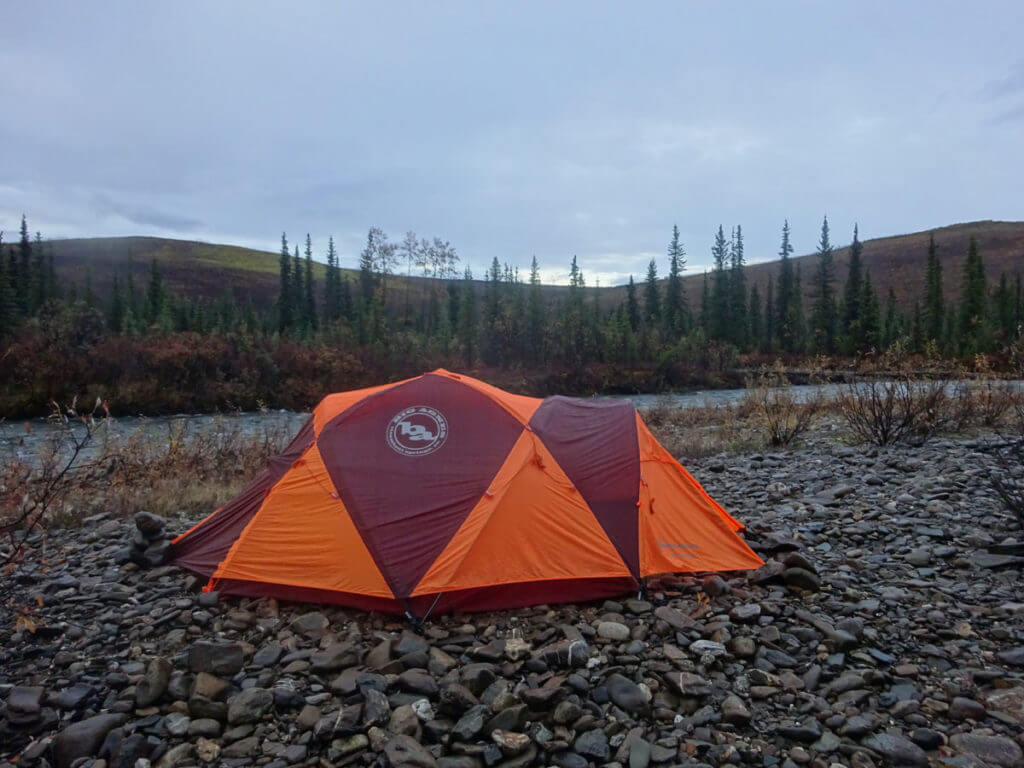
Sleeping Pad: A good pad can make or break your hunt. It’ll do two things for you; help keep you warm by insulating you from the ground, and help you rest better by providing a comfortable bed. I personally like a pad that inflates to around 2.5 inches thick but deflates and rolls up into a 4X11-inch package for transport. It should weigh less than 1.5 pounds. My current favorite is the Insulated Air Core Ultra made by Big Agnes. Be sure you get a patch kit from the manufacturer and carry it with you. Eventually, your pad will have a bad relationship with a sharp pine needle or cactus spine, and you’ll have to administer a little therapy in the form of a patch.
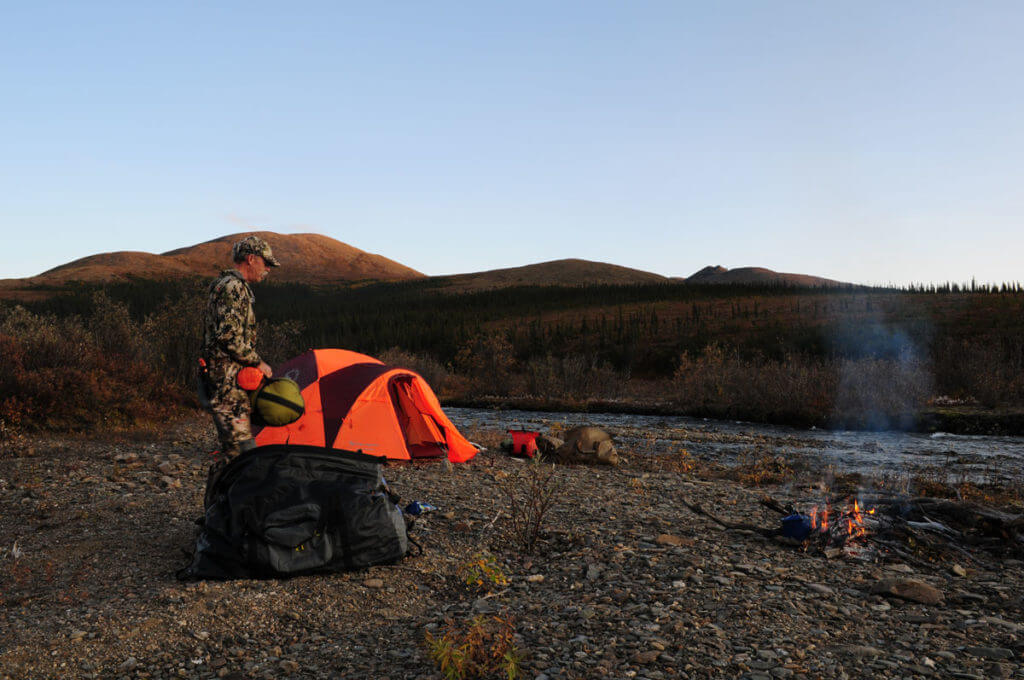
Tent: Last but not least, a tent is the item that you won’t always need, but when you do need it you need it bad. There are several schools of thought when it comes to superlight bivy tents, beginning with a simple waterproof bivy sack that your sleeping bag slides into and ending with the kind of 4-season expedition-type tent that you’d use to climb Mount Everest. I recommend a happy medium. Bivy sacks will save you about two pounds in weight, but they are significantly uncomfortable when dealing with inclement weather. Most don’t offer any room at all to store gear, or for cooking in during a downpour. That means your backpack and other gear are stuck outside in the rain, and anytime you want a hot meal, so are you. On the flip side, 4-season tents are way too heavy to carry unless you expect to encounter very heavy snowfall.
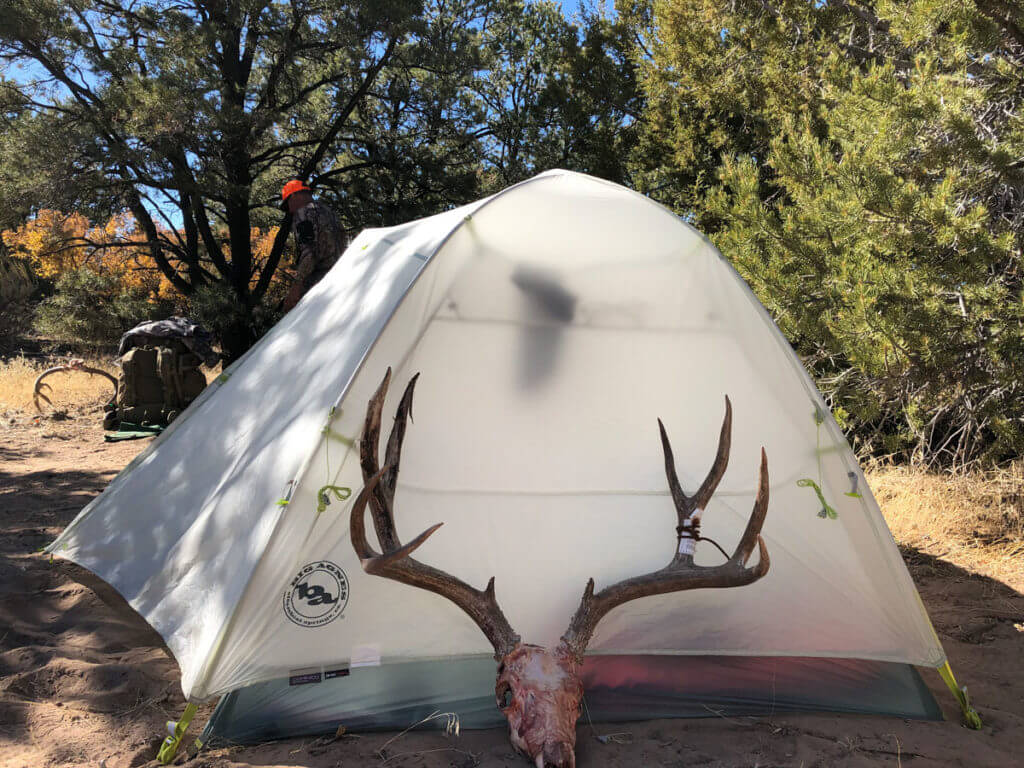
During a recent mule deer hunt into really rugged, remote country my hunting partner and I both (without intent or collaboration) used Big Agnes tents. Even more evidence of the quality and design of these tents is that the only other backpacking hunters we encountered during the hunt were both using B.A. tents as well. There is no better testament to quality than finding a product being used in significantly rugged, demanding backcountry environments by hardcore hunters. It’s super compact, riding nicely in my pack while traveling. Why a two-person design? Because it’s only about half a pound heavier than a single-person tent, but affords significantly more room for gear and for cooking. Also, if my wife or one of my kids goes hunting with me we can share the tent, rendering our shelter even lighter when split between two packs.
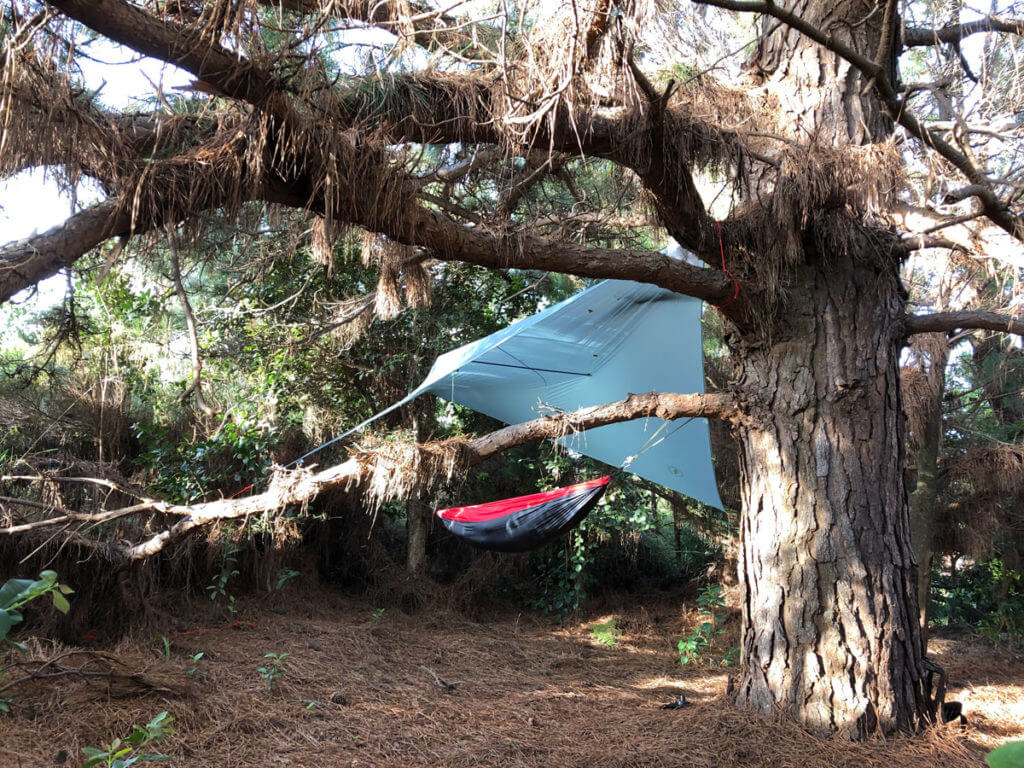
Tarp & Hammock: A good alternative to a pad and tent is a tarp and hammock. This setup has limitations of its own, but is incredibly lightweight and works very well when temps are moderate and wind absent. You just find two suitable trees, stretch your superlight tarp as high as you can reach in a diamond-shape (opposite corners to the trees, remaining corners down and out to the side), hang your hammock at hip level underneath, and insert your sleeping bag into the hammock. I’ve used this setup with great success in the backcountry of Hawaii, where temps are moderate but I didn’t want to sleep on the ground because I’m not a fan of sharing my bed with centipedes. Sleeping in a hammock takes a bit of getting used to, but is reasonably comfortable.
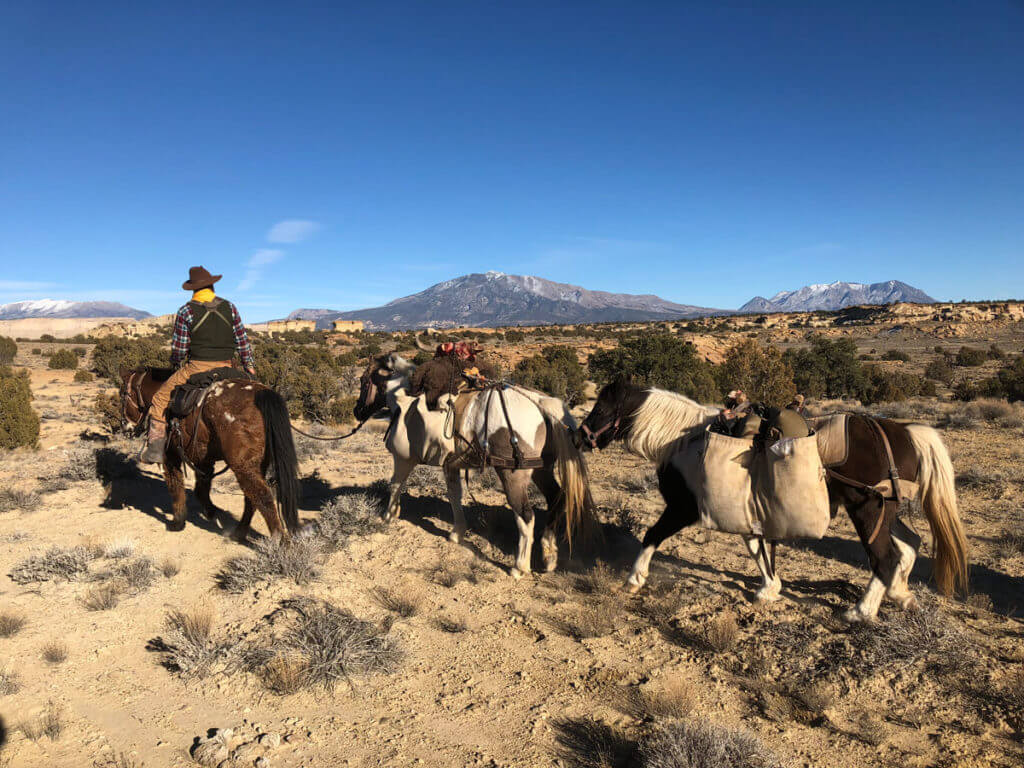
WHERE TO SHOP
High-quality lightweight camping gear is not always easy to find, and in fact, most equipment designed and sold by companies that produce “Hunting” gear is not up to snuff. Much of the best camping gear comes from mountaineering companies; folks who build gear for extreme stuff like climbing Everest. I’ve used and highly recommend gear from Big Agnes, Kifaru, and Mountain Hardwear. Figure out what you want, research their gear, and then buy the best and lightest you can afford. You won’t go wrong. Good luck, and have fun bivy hunting the backcountry.